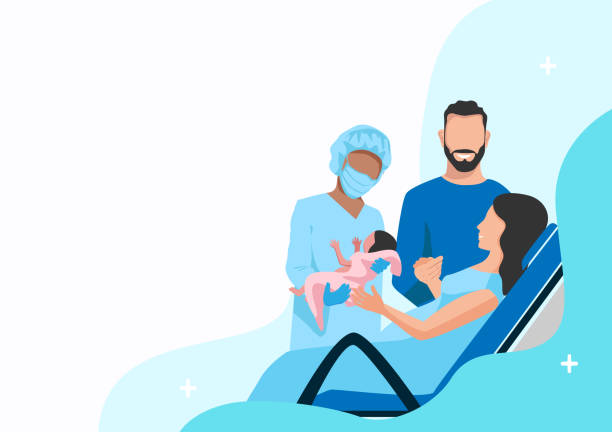Goa is abuzz with excitement as vintage bike and car owners, users, collectors and fans are decking […]

A SHORTAGE OF BRIDES IN GOA!
Cover Story, Sept 02 - Sept 08 2023 September 1, 2023INFERTILITY: The IVF Treatment Speciality Block on the 8th floor of the new Goa Medical College & Hospital in Goa is to help young couples to be parents. We understand this is not meant to be a surrogacy or a test-tube baby facility…
By Rajan Narayan
There is a desperate shortage of suitable girls of marriageable age in Goa. Many young Goan men cannot find girls let alone one who may be the ideal bride for them and their family. Because of education there is a strong prejudice against marrying teenage girls. Health Minister Vishwajit Rane admits that nobody congratulates parents when two daughters are born in succession.
Recently, we were wondering why a well-placed government officer was desperate to get married. The information is that it is more difficult to find eligible girls in Goa than eligible boys. The male/female sex ratio for instance is 1:6 and shockingly shows that there are only 770 girls for every thousand boys in Goa.
So by the time the girls grow up to 18 years which is the marriageable age, the number of brides available in Goa will be down. In the rest of the country where parents insist a male child would be welcome, many women are reluctant to get marry. The rate of abortion of the girl child in Goa is among the highest in the country. It is ironical that in such a highly literate state has a prejudice against the girl child. ‘
GIRL/BOY DISCRIMINATION
YOU must be aware of the practice of parents distributing peda when they are blessed with a male child, in the case of a girl child only jalebi is distributed to family and friends. In India we think even sweets have a gender identity and in Goa it is no different.
When male child is born people have to congratulate the couple. In the case of female child inevitable they wish better luck next time. The reason while Minister Vishwajit Rane has been so keen on set up a state-of-the-art IVF center at the BMC is because the taluka with the biggest shortage of girls is Sattari. There are only 776 girls to every 1,000 boys in Sattari taluka.
Divya and Vishwajit Rane themselves have only two daughters. There is even the suspicion that the new IVF Centre has been set up by the Rane couple to have male child through IVF. Needless to say part of the problem could be that the Rane family which rules over Sattari has deliberately kept the taluka backward. Sattari is amongst the two taluka in Goa which do not come under the Tenancy & Mundkar Act.
Sattari taluka is consider as a jagir of Pratapsingh Raoji Rane, reportedly gifted to him by the erstwhile Portuguese masters in Goa. Similarly, the Pernem taluka is also not covered by the Tenancy & Mundkar Act. It is not the coincidence that Pratapsingh Raoji Rane was the revenue minister in the Shashikala Kakodkar cabinet when the Tenancy & Mundkar Act was passed. Under this act cultivated land was allotted to the actual cultivator and not the landlord or bhatkar. The tenant had to pay a token price. Similarly, the tenants working in the house of the bhatkar who were called mundkar were allotted 300 sq mts in the villages and 150 sq Mts in urban areas.
The total sex ratio for the whole of Goa is 947 girls for every 1,000 boys across all categories. South Goa lags behind north Goa when it comes to the population of the girl child. The taluka with the lowest sex ratio is Pernem where there are only 647 girls for every 1,000 boys. Sattari ranks second last with 776 girls for every 1,000 boys. Mormugoa which includes Vasco and Sancoale also have a relatively low sex ratio.
QUEPEM & SANGUEM
THE only two taluka which have a high sex ratio with more girls and boys are Quepem (1,042) and Sanguem (1,000) where the number of girls and boys are more equal. Dharbandora, the newly formed taluka has the lowest number of girl children in Goa.
In the marriageable age group of 18-30 the sex ratio declines with fewer girls available for marriage. This could be partly because of migration where a large number of Goan girls joined their parents in the UK and other countries. Many young women delay their marriage as they want to work and be self-sufficient. There are more working women in Goa compared to the number of young men who are employed. More young men drop out of school and college while girls are more diligent.
Indeed, 50% of those who appear and pass the medical entrance test are girls. Understandably the shortage of bribes is highest in the backward taluka. This is a dramatic change when compared to the last generation of Goans when grandparents and parents were much more productive. The older generation also had less prejudice about having a few daughters because large families ensured an average of 8-10 children which usually included daughters too.
The problems started with the present generation limiting itself to one child. If it is a male. If the first child is a girl they may try their luck again to see if they could get a boy. The average number of children per couple is not more than two.
This has vitiated the reproduction cycle and when once a male child is born, there is no more effort to have more children. In the long run the gender ratio has got affected and distorted. The replacement rate for any population is two so that the couple who had the children are replaced. So the ideal gender issue is 1,000 each of both boys and girls.
The IVF Centre set up in the GMC will not guarantee that a couple seeking help here will be guaranteed a male child. It will only help couples who have problems conceiving the normal or natural way because of various health issues. Contrary to the general impression both man and woman can have difficulty creating a child. Less sperm count in the male can affect reproduction as much as problems the wife may suffer from.
Even among the educated there is the impression that infertility clinics can produce test tube babies. This is a wrong perception. Infertility clinics do not provide surrogate mothers for a couple to have a child. In the case of surrogacy, the mother’s eggs are transferred to a third party, a woman whose implanted womb bears the child for the couple.
We remember all those huge rackets of Gujarat having 100s of surrogacy centers with customers coming from abroad looking for women willing to be surrogate mothers for their children. It would be illegal and immoral if the new fancy fertility center in the GMC becomes a cover for surrogacy.
Unfortunately, many of our top film stars have set a bad example by taking to surrogacy to have children despite their ability to have their own naturally born children. The most notorious example are Shilpa Shetty, Amir Khan, and a few more, all of whom are bringing up surrogate children.
SURROGANCY CENTERS
IN Goa, as far as we know the only recognized surrogacy center we know off is Kedar Phadte’s Kedar Hospital in Panjim. Now Dr Phadte is a prominent Goan IVF expert and he is the consultant for the new infertility clinic, officially Assisted Reproductive Technology (Art) and Intrauterine Insemination (IUI/IVF) Center at the GMC.
IF you remember the first test tube baby in India was delivered by Indian gynecologist, obstetrician and infertility specialist Dr Indira Hinduja at Bombay Hospital in Bombay in 1988. She pioneered the Gamete intrafallopian transfer (GIFT) technique which resulted in the birth of India’s first GIFT baby on January 4, 1988. The Hinduja Hospital now has one of the largest surrogacy centers in the country with several branches in our states, with the exception of Goa.
Goa is actually the ideal destination for a surrogacy center for there is a high incidence of abnormality in childbirth and in this case at an IVF center the surrogate motherhood can be kept private information. As far as we know even Hindi films are promoting surrogate babies given our enlightened times.















